In a previous article, I had explained how the Doctor of the Church and Father of English history, Saint Bede had written that “God, ages ago, hath wrought our salvation in the middle of the earth.” He also said;
“In the Earth’s center, ’tis believed the place by Jews called Golgotha, we seek to trace.”
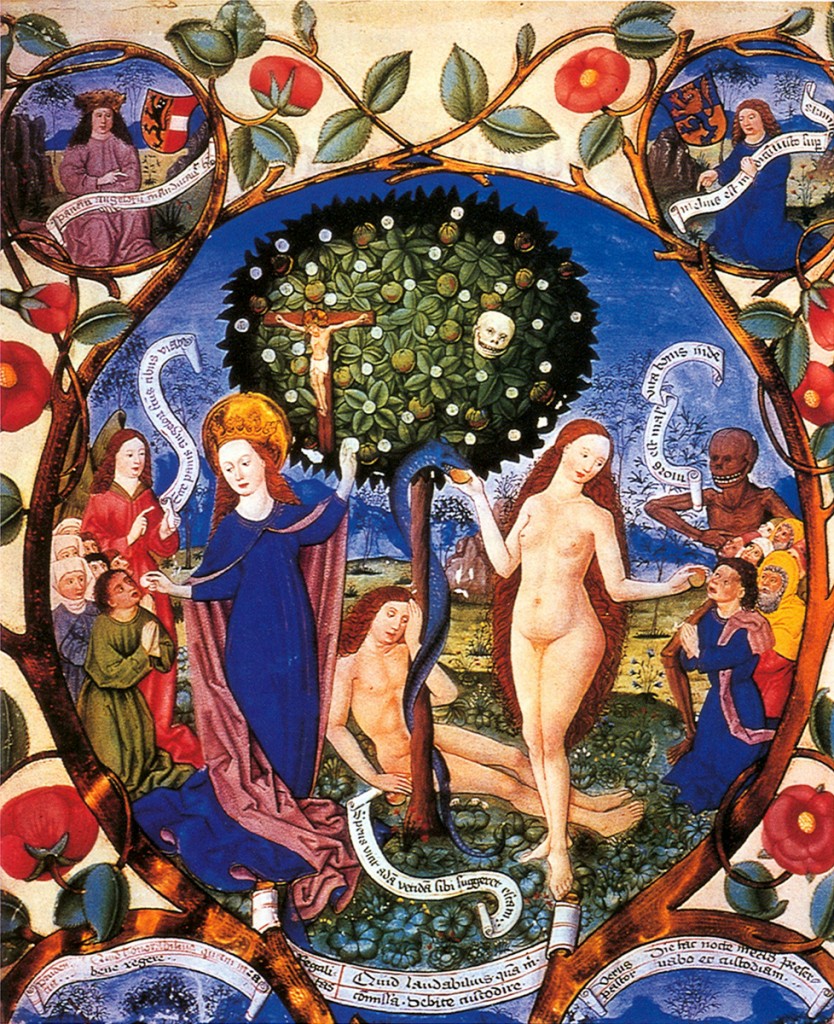
In the story of the Crucifixion of Christ, we are told in John 19:13, “When Pilate heard this, he brought Jesus out and sat down on the judge’s seat at a place known as the Stone Pavement (which in Aramaic is Gabbatha).”
In researching the most recent Biblical text, you will find that the new word is Golgatha, which is said to mean the place of the skull but was originally translated from the word Gabbatha and had allegedly derived from ‘Lithostrōton or lithostrótos, which is said to mean “stone pavement or mosaic pavement. As you can see, lithostroton is a long way from the doctored word we have now being Golgatha and still different from Gabbatha.
Here is a copy showing these various translations and original words that we have today
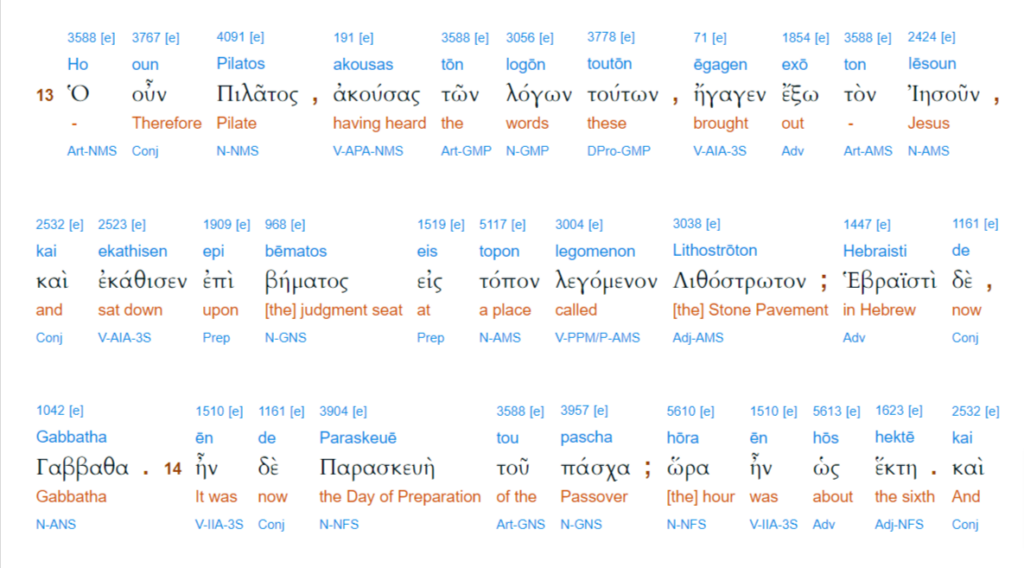
A clue to the true location is Pilate brought Jesus here and then sat on the judge’s seat. Hence, we know that this place was some earthly court and religious center where the Apostles and Fathers of the Church had taught and performed Baptisms. In 311 or 312, Lucian the Martyr of Antioch (322) mentions a cave, the gates of Hell, and a cleft in the rock of Golgotha in a fragment of the defense made before Maximinus. Lucian had said;
“If yet you believe not, I will also offer you the testimony of the very spot on which the thing was done. The place itself in Jerusalem vouches for these facts, and the rock of Golgotha broken asunder under the weight of the Cross: that cave also, which when the gates of Hell were burst, gave back the body in newness of life.”
According to Eusebius, who had written about the Life of Constantine said the Emperor first beautified the monument with rare columns, then paved with finely polished stone a large area open to the sky, and enclosed on three sides with long colonnades, and lastly erected the Church itself “at the side opposite to the cave, which was the Eastern side.”
So the clues to this location thus far are that it is near or in a cave, so there is a mountain involved with rocks that were said to be near some type of judges seat that also was the gates of Hell and was an essential location and religions center for a long time. The Church of Constantine was opposite to the cave, which was the Eastern side making the Church on the Western side.
St. Cyril of Jerusalem mentions the location frequently, and there was no doubt that Eusebius knew about it in A.D. 315. It is said that next to Eusebius and the Bordeaux Pilgrim who visited Jerusalem in 333, Cyril is considered to be the earliest and most important witnesses as to the site of Constantine’s Churches.
Saint Cyril had written about the descent of the Holy Ghost on the day of Pentecost;
“as we discourse on Christ and Golgotha here in Golgotha, so it was most fitting that we should also speak concerning the Holy Ghost in the Upper Church; yet since He who descended there jointly partakes of the glory of Him who was crucified here, we here speak concerning Him also who descended there.”
In Cat. xiv. § 5, he says, “It was a garden where He was crucified. For though it has now been most highly adorned with royal gifts, yet formerly it was a garden, and the signs and the remnants of this remain.” Cyrill also alludes to the fact that this ceremony allows the initiate to “jointly partake of the glory” when he stated, “He who descended there jointly partakes of the glory of Him who was crucified here.”
Cyrill mentions a ‘garden’ twice, and it is obvious from the comments he made that he knew of this location that was also called allegorically a “garden and where royalty was buried” and the place of their “Holy Sepulchre,” once called Lithostrōton or lithostrótos, and then later changed to Gabbatha and then Golgatha to help conceal its original location from the profane (uninitiated) and grave robbers.
It was said that this custom of teaching and baptizing had remained in Jerusalem in the time of John, Cyril’s successor as Bishop, who in writing to Jerome says, “The custom with us is that we deliver the doctrine of the Holy Trinity publicly during forty days to those who are to be baptized.”
The following statement is from the Bordeaux Pilgrim:
“From thence (the Palace of David) as you go out of the wall of Sion walking towards the gate of Neapolis, on the right side below in the valley are walls where the house or Prætorium of Pontius Pilate was: here our Lord was tried before His Passion. On the left hand is the little hill (monticulus) of Golgotha, where the Lord was crucified. About a stone’s throw from thence is a vault (crypta) wherein His body was laid and rose again on the third day. Thereby command of Emperor Constantine has now been built a Basilica, that is to say, a Church of wondrous beauty, having at the side reservoirs (exceptoria) from which water is raised, and a bath behind in which infants are washed (baptized).”
Then we find out from Vespasian that another old name for this city was the ancient city of Shechem, now Nâbulus: the “porta Neapolitana” therefore was in the North wall of Sion.
So, now we know from all these most preeminent authors on this subject that the place we know of as Golgatha was also called Gabbatha. Before then, it was known as Lithostrōton or lithostrótos, but even later was called the city of Shechem, now Nâbulus (Nebo or Nabou), and Jerome writes Neapolis or Naplouse. Nebo (Nabau), a mountain celebrated as the scene of Moses’s death – a place in the tribe of Judah, Ezra ii. 29; Neh. vii. 33, a town belonging to the tribe of Reuben, taken by the Moabites, who held it in the time of Jeremiah (xlviii. 1).
When I read these latter names of Nâbulus (Nebo or Nabou), Neapolis, or Naplouse, I immediately remembered previous articles I had written about Nicopolis or The Holy Village of Ayios Nikolaos on the Island of Crete, which is also known by the names Agios Nik or Ag Nik – Greek: Άγιος Νικόλαος [ˈaʝos niˈkolaos]) and in English – Saint Nicholas. A place that looks like the mosaic or Stone Pavement I mentioned above.
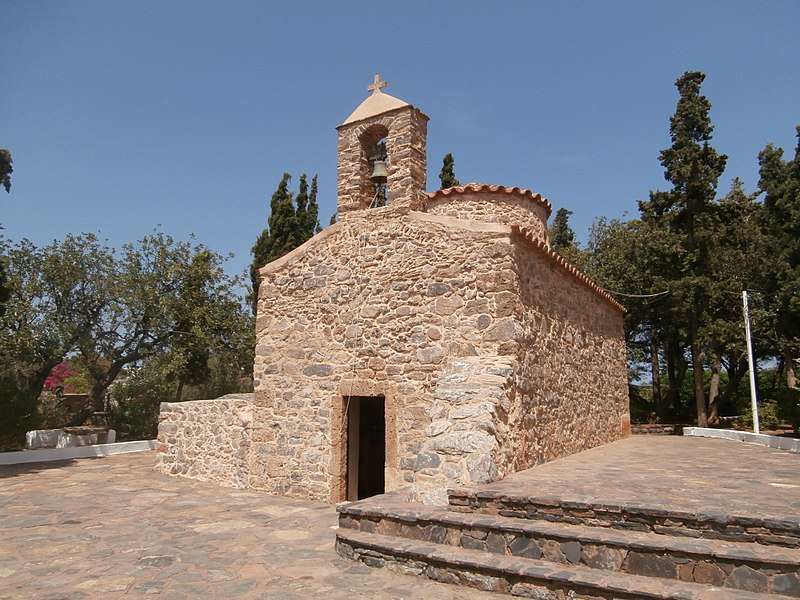
My research had proved that Nicopolis was anciently called Neapolis (Naplouse or Napolose) and is listed as a city in Samaria between the Mountains of Gebal and Gerizem, approximately 24 miles North of Jerusalem. I have found it also under the names of Sychar, also called Sichem and Shechem.
JERUSALEM – THE HEART OF THE EARTH IN THE DEVIL’S CAVE
The references by Bede of God giving us “salvation in the middle of the earth” and our heavenly city Jerusalem at its center, brought me to another similar reference in the Scripture called the “Heart of the Earth.” A place I know of as the island of Crete where I have discovered before along my path retracing the steps of the History of the Brotherhood and also where I believe happens to be the initiation/baptism and resting place of my most ancient ancestors.
Please keep in mind that this latter research was the result of my studies into the Christian concepts of Hell by also contrasting them with the ancient Greek myths of the Abyss and Hades coupled with the Gods/Deities who were said to rule this region of our world with a type of hive mind force. This hive mind force that is called the LORD, Prince of the World, and Satan in the Judeo Christian Scripture I contend began on Crete where some type of cosmological deal was sealed with the Brotherhood of the East and now, the West in blood and stone at Golgotha AKA the “Heart of the Earth.”
As Eliphas Levi had written, “They clave to their brethren, their nobles, and entered into a curse and into an oath, to walk in God’s law, which was given by Moses, the servant of God, and to observe and do all the commandments of the LORD our God, and his judgments and his statutes. Levi also said, “The fallen angels gathered around their chief, Samiaxas, on a high mountain, which has been called ever since, ‘the mountain of the Oath’, for the Eggregores pledged themselves there one to the other with a sacrilegious vow.”
This is where Jonah had stayed three nights in what is called today in the English doctored versions as the “Belly of a Whale,” but is properly translated from the old Greek Text as “the heart of the earth, the heart of the seas, or more appropriately, the “belly of hell, the world of the dead, which was believed to be far below the surface of the earth.
In Matthew 12:40, the LORD Jesus had said just has Jonah had stayed three nights in Hell, so will the Son of Man, i.e. you and I;
“A wicked and adulterous generation demands a sign, but none will be given it except the sign of the prophet Jonah.
For as Jonah was three days and three nights in the belly of the great fish, so the Son of Man will be three days and three nights in the heart of the earth.
The men of Nineveh will stand at the judgment with this generation and condemn it; for they repented at the preaching of Jonah, and now One greater than Jonah is here.”
The secrets and the truth hidden within these passages are found by contrasting them with the Old Greek and Hebrew translations with modern English. By doing so, you will find that English is written more allegorically with similar words and nouns that have been changed from the original text to conceal the true meaning from the profane (uninitiated).
As I stated above, the word whale does not mean a literal whale, it allegorically represents the “belly of hell,” which our ancestors had called the world of the Dead that was located in the “Heart of the Earth.”
The word heart in our modern version of Scripture is variously translated onto the word ‘leb,’ which means the midst or middle (of things), the inner man or mind that serves his moral character that we already know is said to be a wicked and adulterous generation. This is what I like to call the little or false noos, or the second brain that causes many people to become selfish and pursue material desires which are considered evil and wicked i.e. Satanic. By default of character and mode of thinking, they are connected through their own bellies (second brains and emotions) to the “Bely of Hell” or the Abyss and River Acheron underneath their feet.
As I have explained in several previous articles, the earth’s center or what has been called the navel or birth center of the classical Gnostic world and Europe’s first powerful maritime civilization was and is what I like to call the “Holy Island of Crete.” Several historians, Greek myths, and many Biblical stories originate and also prove that Crete is the original home of the Tribe of Judah, the true home of Freemasonry, and also the place they call ‘Golgatha.’
In the Scripture, the true center of the world is where the Heiros Gamos had begun, where you will find the Seat of Satan at Pergamon, which would be the judge’s seat at a place known as the Stone Pavement (which in Aramaic is Gabbatha), and the mapping of the world which is referred to as Jerusalem, or what we can call the “New Jersulaem” in Ezekiel 5:5;
“This is what the Sovereign LORD says: This is Jerusalem, which I have set in the center of the nations, with Symbols – Jerusalem map countries all around her.”
Here is a very old map made by the German Heinrich Bunting that shows exactly what I’m stating here.
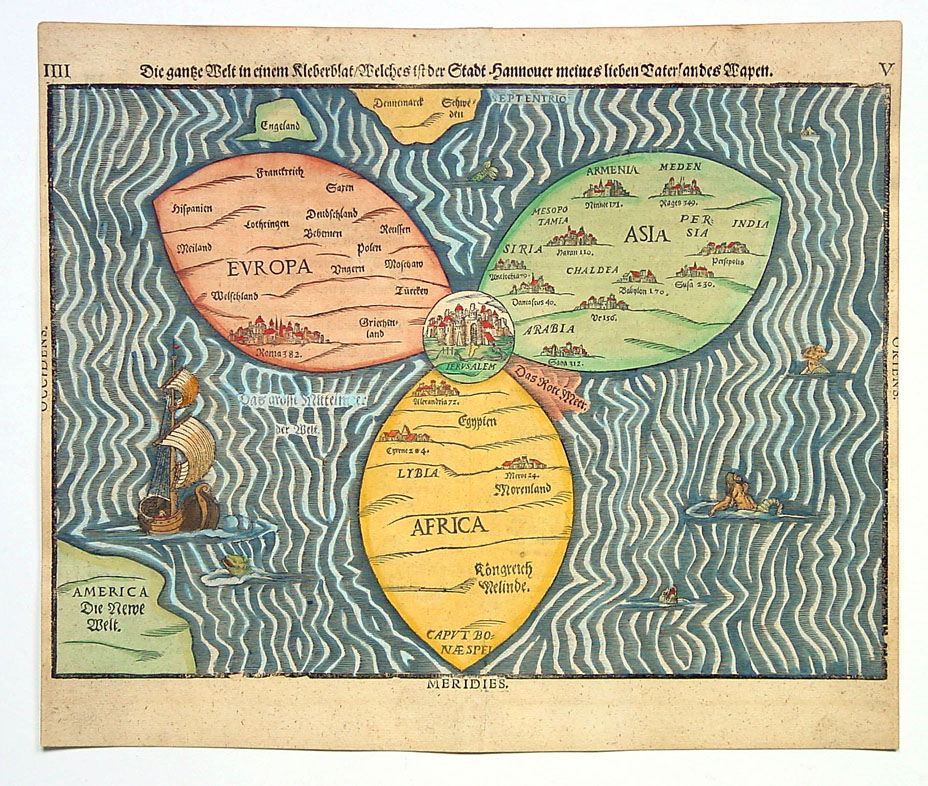
This location would be the ancient official spiritual center for all Judeo-Christian religions. In Ezekiel 38:12, the Jewish people are simply referred to as the people who live at the “center of the world,” and in Hebrew reads, “the naval of the world.” I had detailed this research in a previous article, The Ancient Naval Center of the Old World, where I explain that the island of Crete in the Mediterranean Sea is halfway between Europe, Africa, and Asia, and was considered in ancient times as being at the center of the world, and the original location of the first city of Jerusalem.
Jerusalem was the capital of Judah and the center of Israelite and Hebrew worship. It was the “metropolis” of the Greek Hellene nation, the house of the Ark of the Covenant amongst the globes royal houses, and the place of the crucifixion of Christ AKA Golgatha.
For example, the Church of the Holy Sepulchre on Crete is one of the holiest sites in all of the Christian world, unbeknownst to the most pious of Christians. There is a small church once called Aphendi Kristos, or the Lord Christ, near the ancient sanctuaries of Zeus at the Omalos plateau (Κορυφή Αφέντης Χριστός – Δίκτη, από το οροπέδιο του Ομαλού) which is part of the “Samarian Gorge” in Chania, Crete.
Near here was the throne of Zeus, the Father of the Olympian gods, and where he was said to have driven his beloved chariots. According to the historian Diodorus Siculus, the goddess Diana was born here. The peak at Gingilos is known as “Rotten Mountain,” wherein ancient times, according to a tradition, there was also a famous Oracle at the Demonospilio (Cave of Demons or Devil’s Cave, known as the den of demons. It is also said that this was also the place of the Oracle of Delphi, which I have also connected to Crete and this precise location in my article, The Pythia Priesthood of the Delphic Oracles.
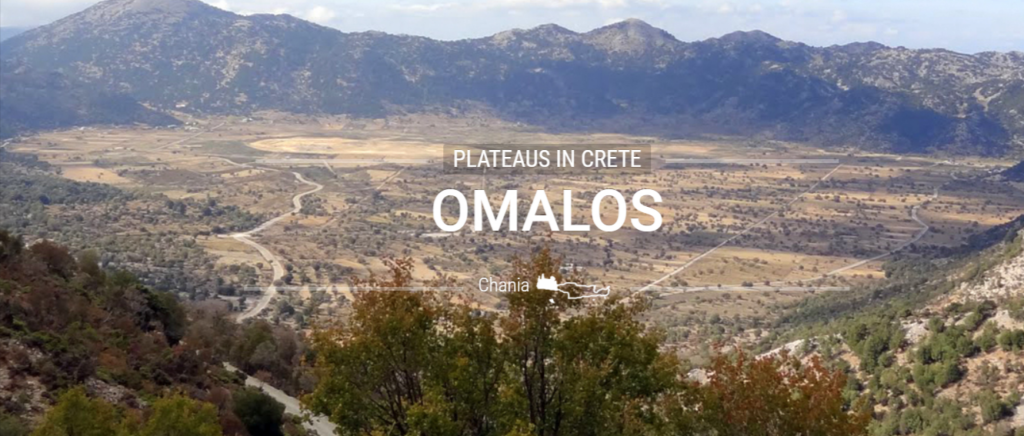
And here we find the cave of the infant Zeus (Heart of the Earth/Fungi Garden of the Apostles) who was hidden by the priesthood over 2,000 years ago. This is the same cave of Epimenides Gnosis, AKA Orpheus, and also where Pythagoras was initiated into the Orphic mysteries.
It was here where Pythagoras had learned the laws of Minos and was initiated by the Ancient Priesthood of Jupiter (Amon) on the Sacred Mountain of Mount Ida (Zion), and in the same cave on Crete that the greatest of all Greek Gods, Zeus was educated and also hidden from his most vengeful father, known in mythology as Cronus and in science as Saturn.

I have written extensively about Mount Ida and the Tribe of Judah detailing my research and the connections to Freemasonry in articles such as The First Jews of Crete, Lost Tribe of Judah Found: The Bedas, The Masonic Archons of the Tribe of Judah, The Widow’s Son, Giblim: The Bible’s First Masons in the City of Our Lord and Jesus: The Tribe of Idea (Judah). The people of God’s Mountain called Ida in Crete and who Josephus called the Idaens and is the same name where we derive Judah and the Tribe of Judah in which King David, Solomon, Hiram Abiff, and Jesus are said to be members ie: ancestors and their (our) book, the Bible.
As I explained in a previous article, The Cretan City of Cutha, is also the location of the ancient city of Kutu or Kutha, which is also the name of the capital of the Sumerian (Samarain Gorge) AKA Mesopotamian underworld. This is where “Irkalla AKA Kur, Irkalla, Kukku, Arali, Kigal, and various other names, was a dark, dreary cavern located deep below the ground, where inhabitants were believed to continue “a shadowy version of life on earth”.
The only food or drink was dry dust, but family members of the deceased would pour libations for them to drink.”
This cave was said to be the abode of various demons such as the child-devourer demon known as Lamashtu, the fearsome wind demon and protector god Pazuzu, and the demons who drag people into the underworld to be tortured were called the “galla.” Galla or Gal is where we get the English word cock or rooster which in Greek is ἀλέκτωρ, ορος, ὁ or alektór and in Latin is gallus or gallinaceous. The surname for Jesus being a Galilean from Gallillee on Crete and his Apostles like Simon who became Satan was surnamed Peter were Galileans as well. (Matthew 26:69; John 7:41)
The King of Demons in Judaism is named Asmodeus (Ashmedai) who according to the Kabbalah, is a cambion, born as the result of a union between King David, and the Queen of Demons named Agrat Bat Mahlat who was a succubus. David was the second king of the United Kingdom of Israel and Judah, and also an ancestor of Jesus.
This cave of Zeus sits just above the Plain of Nida on Mount Ida, to the southwest of Knossos. The mother of Zeus was also known in Latin as “Mater Idaea (Idaean Mother).” The name Mount Ida is where the Tribe of Judah had received their name, “the ‘Idaeans,” which is just an earlier spelling of the Judaeans.
This would be the Capital of the Underworld, i.e. Hell and the place of the Skull, Golgatha where Jesus was martyred.
It is alleged that the Roman emperor Constantine had established the Church here in the year 333 A.D., after his mother, Queen Helena, marked the place of Golgotha during her visit in 326AD. Now, here is an image of the Church of Constantine and Helen in Crete with the Double-Headed Eagle or more appropriately, the Double-Headed Phoenix.
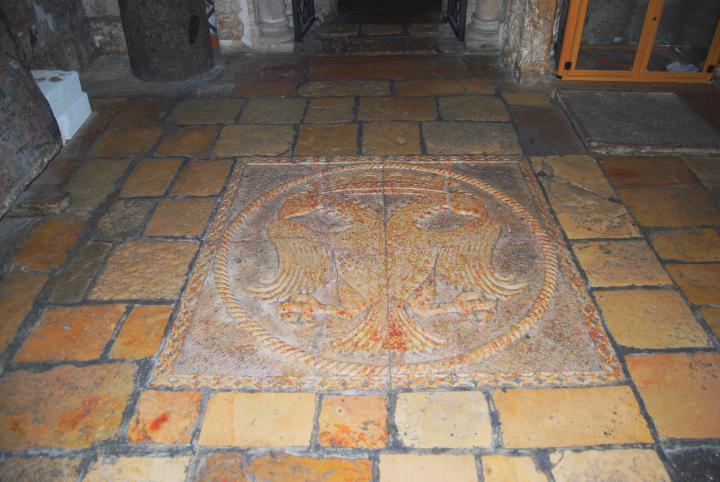
The symbol of the 33rd Degree of Freemasonry.
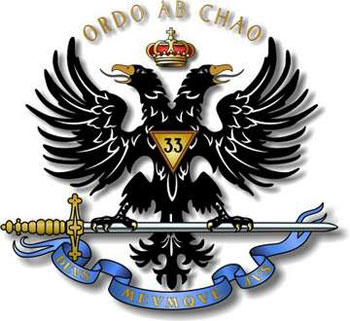
Ancient Crete was the Capital of the Secret Mysteries and home to the Holy Grounds of many famous Gnostics, philosophers, Apostles, and Saints throughout the history of the world. The priesthood of the Curetes had formed here who Herodotus had said came to Crete with the Phoenician Prince Cadmus.
Epimenides, one of the founders of the ancient Gnostic mysteries of Orphism was born in the city of Gnosis, which today is called the city of Knossos (Latin) on Crete. He lived in the 7th century B.C. and established a religion that was centered at the cave of Zeus. Epimenides was a lawgiver, prophet, sage, poet, and author who composed several works in verse such as on the origin of the priesthood of Crete known as the Curetes and the Corybantes.
Famous religious figures such as Saint George, Saint Basil the Elder, Saint Macrina the Elder, and St. Basil the Great were born on Crete. Paul the Apostle lived on Crete for two years and was Companion to St. Titus the Apostle, the first bishop of Crete. The 1st-century Jewish-Roman Historian, Flavius Josephus had married a woman from a royal family on Crete and mentions that one of the Cappadocian (Cretan) tribes is the Moschoi, associated with the biblical figure Meshech, son of Japheth: “and the Mosocheni were founded by Mosoch; now they are Cappadocians (Cretans from the island of Crete).”
Meshech is named with Tubal as a principality of the prince of Gog and Magog in Ezekiel 38:2 and 39:1. Modern-day Moscow in Russia was founded by the Mosocheni (Moschoi, Mosoch or Meshech), or the Tabalior (Thobelites). The Russians are considered to be Third Rome and Masters of Jerusalem.
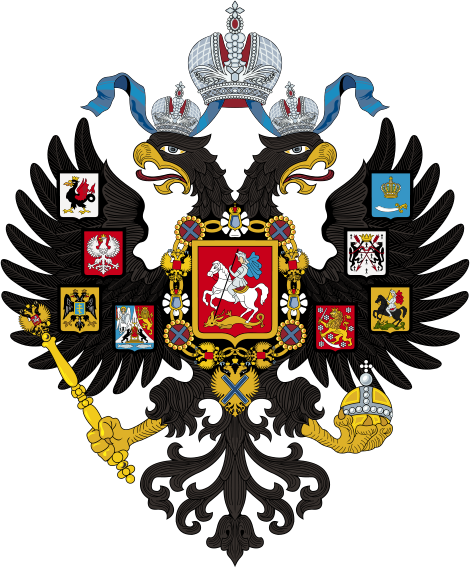
Hence, the Double-Headed Phoenix as their Coat of Arms and the national flag and their adherence to a national religion being the Russian Orthodox Church as the official state symbol of the late Byzantine Empire, symbolizing the unity between the Byzantine Orthodox Church and State.G
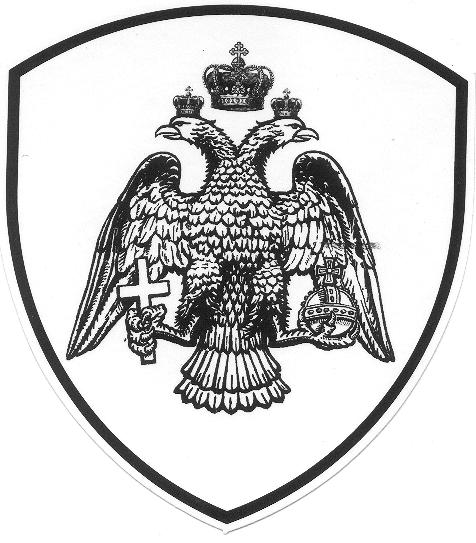
This history and ancient facts are also encoded within Greek mythology when the God Zeus sent two eagles (phoenixes) across the world to meet at its center, the “navel” of the world.
This was their holy center called Omphalos, where it was said that the navel-string of the infant Zeus had fallen to the ground.
The story is told in Myth by Hesiod in which Zeus is hidden in a cave by his mother Rhea from his child devouring Father, Kronus. Hesiod had written;
“Thither came Earth carrying him swiftly through the black night to Lyctus first, and took him in her arms and hid him in a remote cave beneath the secret places of the holy earth on thick-wooded Mount Aegeum; but to the mightily ruling son of Heaven, the earlier king of the gods, she gave a great stone wrapped in swaddling clothes.
Then he took it in his hands and thrust it down into his belly: wretch!
He knew not in his heart that in place of the stone his son was left behind, unconquered and untroubled, and that he was soon to overcome him by force and might and drive him from his honors, himself to reign over the deathless gods.
“After that, the strength and glorious limbs of the prince increased quickly, and as the years rolled on, great Cronos the wily was beguiled by the deep suggestions of Earth and brought up again his offspring, vanquished by the arts and might of his own son, and he vomited up first the stone which he had swallowed last. And Zeus set it fast in the wide-pathed earth at goodly Pytho under the glens of Parnassus, to be a sign thenceforth and a marvel to mortal men.
And he set free from their deadly bonds the brothers of his father, sons of Heaven whom his father in his foolishness had bound. And they remembered to be grateful to him for his kindness and gave him thunder and the glowing thunderbolt and lightning: for before that, huge Earth had hidden these. In them, he trusts and rules over mortals and immortals.”
Pausanias (x. 24. 6) saw near the tomb of Neoptolemus (Nicopolis, Neapolis, Naplouse, Napolose) “a stone of no great size,” which the Delphians anointed every day with oil, and which he says was supposed to be the stone given to Cronos.
To represent and honor this location as the Eastern and Western Brotherhood’s Capital (Double Headed Phoenix), a religious artifact in the form of a stone omphalos was created.
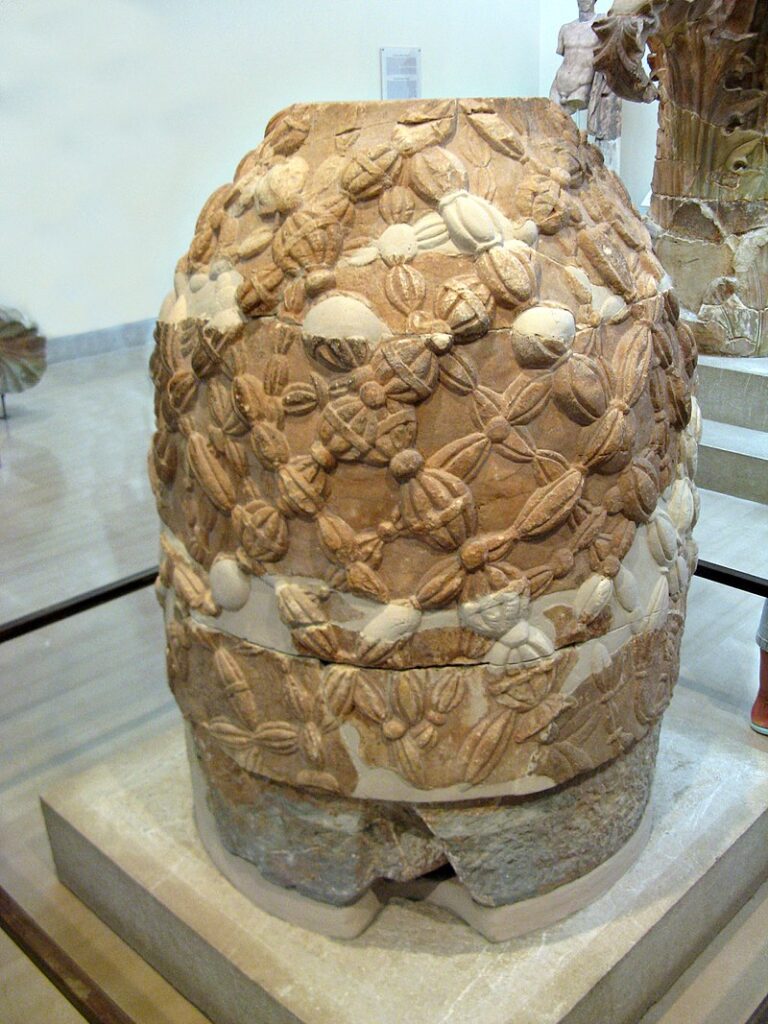
It is known as the Omphalos at the Church of the Holy Sepulchre, Jerusalem, which is an ancient Christian tradition, representing the navel of the world (the spiritual and cosmological center of the world). Jewish tradition held that God revealed himself to His people through the Ark of the Covenant in the Temple in Jerusalem, which rested on the Foundation Stone marking the center of the world.
The Dictionary of Greek and Roman Geography – Volume 1 By William Smith also details this history.
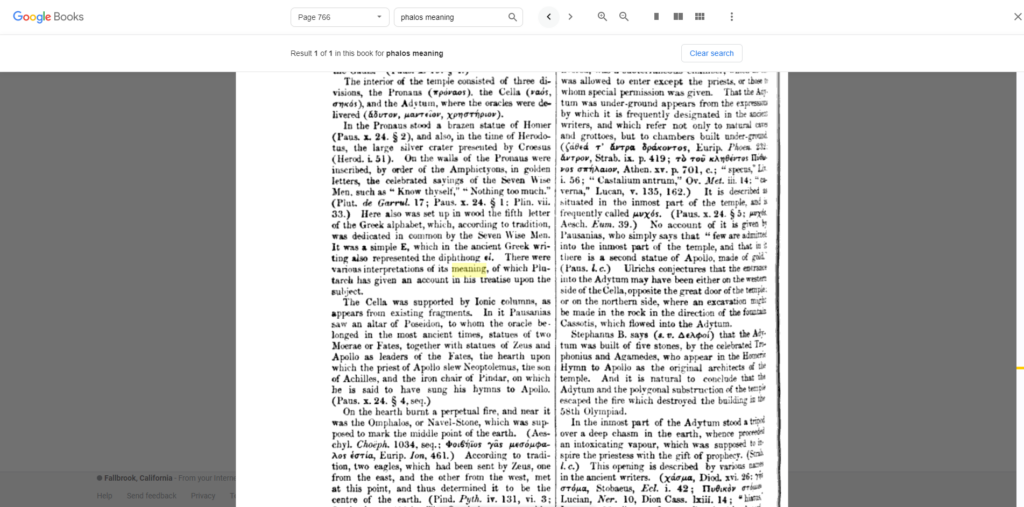
The destruction of the ancient Palace Temple (the Second Temple), the royal archives, and the entire city of Knossos had come at the orders of Roman Emperor, Nero who had sent Vespasian and his son Titus to Judea to subdue the Jewish nation in a massive invasion of the Holy Island of Crete in the year 67 A.D. Titus had served under his father on the island of Crete in the kingdom of Judaea (Greco-Egypt) during the First Jewish-Roman War. For winning this historic holy battle for the Romans, Titus would later become known as Saint Titus, Bishop of Crete and companion to the Apostle Paul.
Roman Senator and historian Cornelius Tacitus (110 A.D.) had written that the Jews often traveled to Crete to celebrate the festival of Pentecost in Jerusalem and that they eventually were exiled from the island when Saturn was driven from his throne by the violence of Jupiter. In The Works of Tacitus, he explains the Jewish people and the exodus from the island of Crete to Africa’s coast in Libya.
Hence, this would be a thread of history and ideas which Bede, my ancestor, had sought to trace with its center near the Omalos plateau at the Oracle at the Demonospilio on Crete, Golgatha, I have placed.

Moe is the founder of GnosticWarrior.com. He is a father, husband, author, martial arts black belt, and an expert in Gnosticism, the occult, and esotericism.

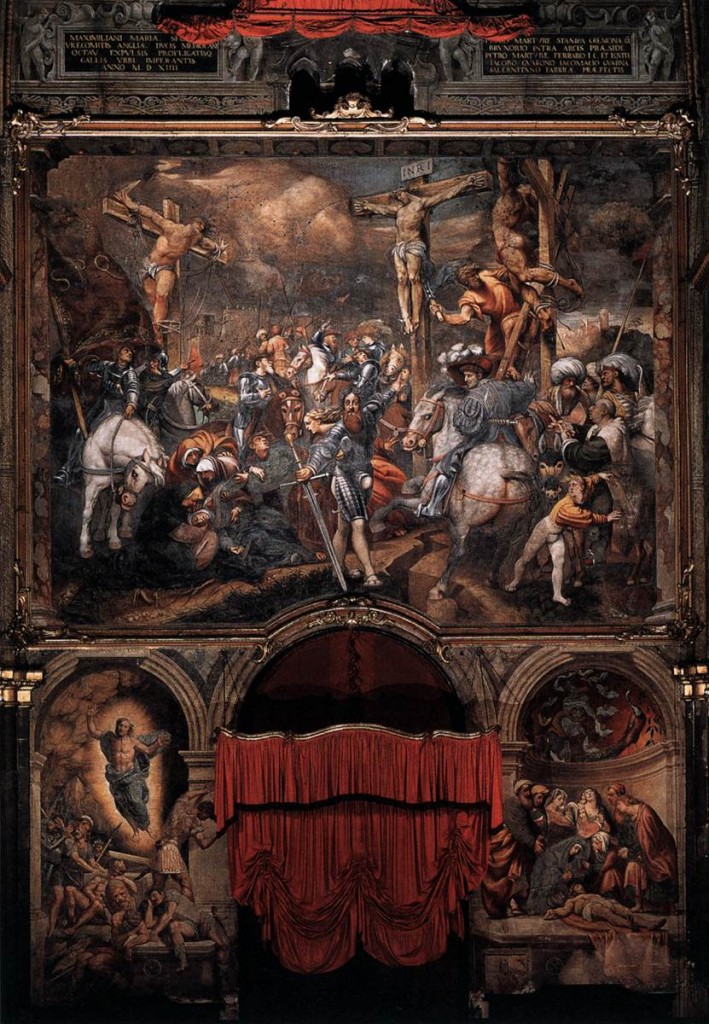
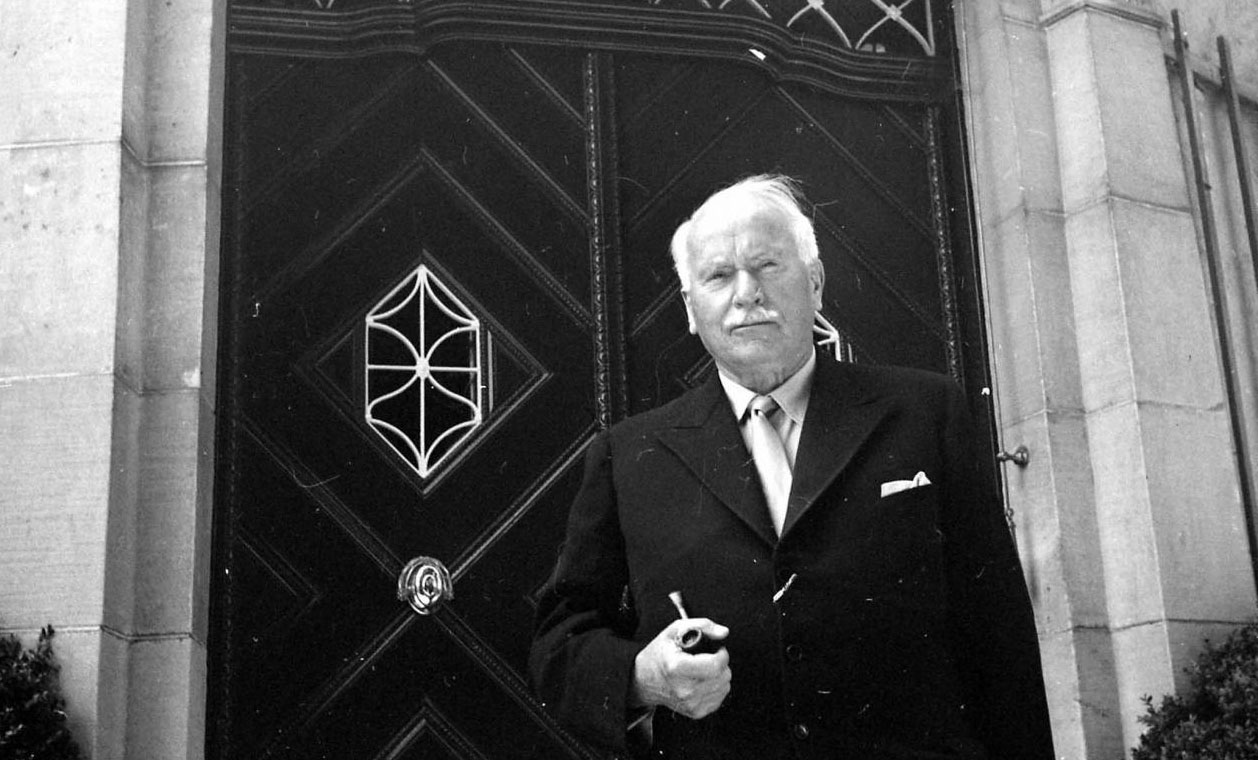

![How another contrarywise before his death saw a book containing his sins, which was shown him by devils [704-709 A.D.] | Book 5 | Chapter 12 How another contrarywise before his death saw a book containing his sins, which was shown him by devils [704-709 A.D.] | Book 5 | Chapter 12](https://www.gnosticwarrior.com/wp-content/plugins/contextual-related-posts/default.png)

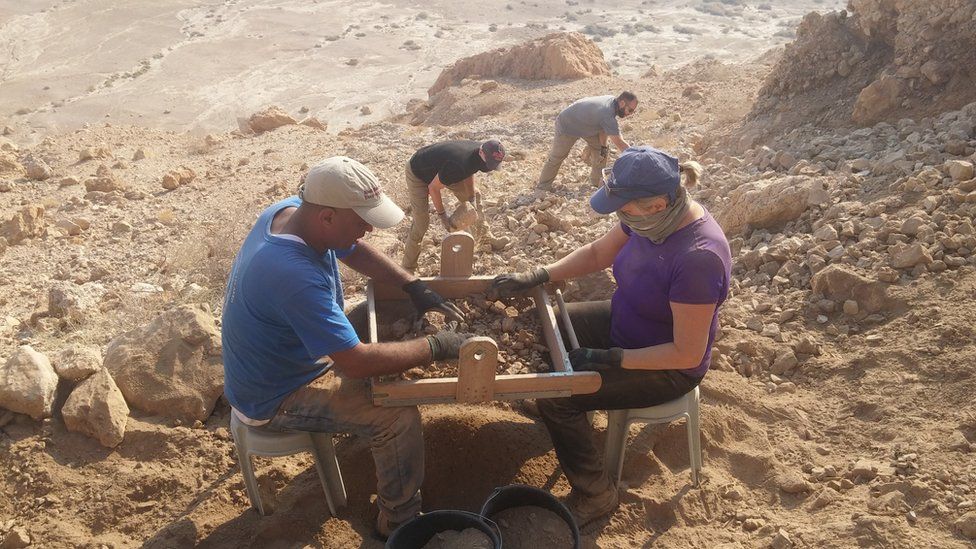
The sources here verify most of what you write about. I’m not surprised. Thanks for putting me on it. My family (surname) line came from Germany not England, and were Lutheran. They immigrated to avoid religious persecution. It helps a lot to understand some of the history behind that move.
https://www.cogwriter.com/simonmagus.htm
You are welcome and thanks for the link. I have written a lot on Simon Magus and will include a few links below that goes into that research and much more. A good book is Simon, son of man; a Cognomen of Undoubted Historicity @ https://www.google.com/books/edition/Simon_Son_of_Man/lB8PAAAAIAAJ?hl=en&gbpv=1&dq=Simon,+son+of+man%3B+a+Cognomen+of+Undoubted+Historicity&printsec=frontcover – He claims Simon was Jesus.
https://www.gnosticwarrior.com/standing-one.html
https://www.gnosticwarrior.com/satan.html
https://www.gnosticwarrior.com/kephala.html
Eventually, I will put this all together in a book.
This link may have some leads or verification of what your searching for.
https://www.bibletools.org/index.cfm/fuseaction/Library.sr/CT/ARTC/k/1010/Searching-for-Israel-Part-Nine-Migration-of-Monarchy.htm
Something else occurred to me as well. Have you read *Uriel’s Machine”, or it’s predecessor “The Hiram Key”?
Great, thanks! No I have not read it but I will check it out.
This is in interesting synchronicity with my work because I was writing an article on Tartarus. In the Scripture, Tartarus (Tartaros) is said to be the place where 200 fallen Watchers (angels) are imprisoned in a subterranean abyss reserved for demons, sinners, and the dead, and in Enoch, we learn that God placed the archangel Uriel “in charge of the world and of Tartarus” (20:2).
Uriel is the angel who is “over the world and Tartarus” (ho epi tou kosmou kai tou tartarou), and as such is the conductor to Enoch in the world below, the secrets of which he explains. In the lost “Prayer of Joseph” Uriel is the angel who wrestles and converses with Jacob and knows the secrets of heaven and he is entrusted with the judgment of the Titans.
The meaning of the name Uriel (Ouriel) is – fire or flame of God” or “my light is God”.
In Uriel’s Machine, the author’s speculate that Enoch’s trip to the seven heavens were trips with a red haired giant. They say that the henges were built by these giants after a meteoric strike. They were built to observe the sky for subsequent strikes that they already calculated loosely.
In The Hiram Key, they say the Templars weren’t actually guarding the remains of the Temple. They were plundering it. He says they discovered tunnels where gold and riches were hidden. He says that they took this gold to Risking Chapel in Scotland. The Chapel is built like a masonic temple, columns and all. He says they (the Templars) were the pirates. The gold was taken on “pirate ships” bearing the skull and bones. They also took some of the gold by caravan masquerading as guides. Both Author’s are Freemasons. Interesting stuff.
That should have said Roslin Chapel. My keypad got me.
Check this out…
https://m.facebook.com/story.php?story_fbid=145097404332614&id=100064970645568&sfnsn=mo
I’m working on my family tree and have discovered that my grandfather’s were from both lines of Judah; the line of Zerah and of Perez. Another line of grandfathers are of the line of Levi. All the high Priests of Israel were my grandfathers. Another line takes me back to Nebechadnezzer. I don’t know what to think. I started the tree searching for Native American Ancestry, which I also found. It’s kind of insane to find all this out at age sixty.
I discovered your site searching for obscure birthmarks. I was born with a birthmark of a bruise on the inside of my right heel. It’s almost as if it were a thumb print if grabbed from behind the heel. Sounds crazy I know, but then the wise men say “Know Thyself”.
Moe, I’m very interested in your research because of my ancestry as well. Without going into that ancestry here, let me just say that I’ll be following your work, and definitely appreciate the time you’ve spent digging it up.
My pleasure and thank you John for acknowledging my research.
Please tell me that you understand that the devil and his fallen angels are here screwing with you and me and that the roman catholic church state system is the means which satan uses to control the world and it’s inhabitants. The jesuits write and they re-write history. They are the enemies of our LORD Jesus Christ and of our heavenly FATHER. Satan gave the pope his great power and seat of authority in the earth and this keeps getting kicked down to the next generation. My entire family is in that diabolical system, their Christians, they don’t follow the principles that are laid out in the sacred scriptures. They believe in manmade traditions and not in GOD’S WORD alone. GOD’S spirit has inspired and moved upon the hearts of the writers of the old and new Testaments, they are of DIVINE nature and not of man but the church of rome adds to the scriptures all the time, believe me I was brought up in that stupid manmade system they do not teach the truth of the scriptures and never have so but seriously my friend all of this gnostic crap that your trying to sift through has been set up for you and for us all to gobble up, it’s from satan the prince of darkness, to keep us in darkness, darkness of the mind, so that the love of our heavenly FATHER and HIS dear SON Jesus doesn’t get through to you and I, don’t fall for it brother, it’s a rabbit hole filled with deception and you’ll lose who you are, you’ll lose your soul. Jesus died for our sins, HE IS our GOD HE IS our SAVIOUR HE and our heavenly FATHER long before our world was created by them made a plan, that if we fell as did Lucifer when he led the angels of GOD to rebell in heaven so long ago, then Jesus GOD’S SON ((because Jesus IS ETERNAL as well as our heavenly FATHER)) would leave the heavenly courts and take on the nature and flesh of humanity, live a GOD centered life glorifying HIS FATHER in heaven, leave us human beings a perfect example of how to live life to the glory of God love our fellow man and to one day be seated with HIM in HIS thrown. Everything else that isn’t alone in the scriptures is a lie from our great enemy and of our heavenly FATHER as well. Please I’ll pray for you my friend that you’ll find Christ as your personal SAVIOUR and REDEEMER.
Jim, you are so very right. No Gnosticism, and no Jesuit controlled Vatican, Roman Catholic Church and no Masons. They are all legs of the same monster.
I happened upon this guy while researching the DNA aspects of prophecy. I believe that is the key and the book of life.
I am always on a hunt for more pertinent information on Jesus, world history, the Bible and other extra supporting Biblical texts, but I don’t have any need to go down the gnostic rabbit holes. Why? Because the early gnostics followed the lead of the fallen angels, that is very clear. They wanted to study, utilize and teach, the hidden knowledge that man was never supposed to have in the first place; not yet anyway. We aren’t ready for that information and it always opens the door to evil and trouble for us.
But, most men are impatient and want more power and more control so they seek out this information when clearly guys like this author know the book of Enoch. They know Genesis 6. So they KNOW we aren’t supposed to have this gnostic, esoteric knowledge in this lifetime.
God didn’t want man to have it not to keep us stupid, but because in the scheme of creation, we are babies and it would open doors to forces that we couldn’t handle. So, just the same as in Noah’s day when the land became only evil, it would keep happening. The ritualistic nature of Catholicism is wrong. God even rebukes the use if incense!
Somehow, millions of people these days still seek it out gnosticism and rituals.
I do respect the level of researching he has done, I just can’t fall for the gnostic Gnostic narrative.
#Maranatha
No spiritual knowledge i.e. Gnosis sounds like a world of hell. The Bible was written by the Gnostic Sethians ie Romans. The words you speak and the freedom to do so are the result of these teachings. This is why you respect the Gnostic narrative but since you do not understand this history, you falsely assume Gnostics or Masons are defacto bad when in reality, they are the good guys. The Chruch demonized knowledge so they could keep it for themselves which is understandable given the fact that we have been in a worldwide war for over 2,000 years with this being the 2021 year thereof.
Hi, do you actually believe that Jesus and Pythagorus were historical characters?
Yes, but the name Jesus was a given name, and the Scripture Doctored to conceal his identity. His real name may be Simon, Son of Jonas, and brother of Andrew. He was a native of Bethsaida, and a fisherman in partnership with his brother, James, and John. At first the two brothers were disciples of John the Baptist, who pointed out Jesus as “the Lamb of God.” His surname was Peter, and our Lord told him that he should be called Cephas, the Syriac equivalent for the Greek Peter, which means a rock or stone. The name Pythagorus appears to be a real name.